Lincoln Cathedral – Discover Awe-Inspiring Architecture
The Lincoln Cathedral is one of the most stunning churches in the United Kingdom, and it may have once held a world record for its incredible height from 1311 to 1548. In this article, we will examine the history, architecture, height, architect, and a few interesting additional facts about the famous Lincolnshire Cathedral. Keep reading to learn more about the Lincoln Cathedral!
A Look at the Lincoln Cathedral
| Architect | Unknown |
| Date Constructed | 1072 – 1311 |
| Function | Cathedral |
| Materials Used | Limestone |
| Height | 83 meters (or 272 ft) |
| Location | Lincoln, United Kingdom |

The Lincoln Cathedral is an Anglican cathedral located in Lincolnshire in the United Kingdom, and it serves as the seat of the Bishop of Lincoln. Like many of these ancient Anglican cathedrals, it started its life as a Catholic cathedral but changed over during the reign of Henry VIII. Regardless of this, it is one of the absolute oldest churches in the country and a stunning example of Early Gothic architecture, although it does have origins that are even older than that particular architectural style.
So, let’s have a look at the history of the Lincolnshire Cathedral.
The History of the Lincoln Cathedral
The Lincoln Cathedral went through several stages in its development over the centuries. The earliest phase of this construction started nearly a thousand years ago in 1072, and at that time, it was constructed as a Romanesque cathedral in the Catholic faith. It was founded by Bishop Remigius de Fécamp after he moved the seat of the bishop from Dorchester. Sadly, he never saw it consecrated as he died shortly before that could occur in 1092.
The Lincoln Cathedral would then continue in its functions for several decades, but as is the fate of a remarkably large number of ancient cathedrals, it eventually suffered a few natural disasters.
There was first a fire in 1124 and then an earthquake in 1185. This necessitated a new stage of construction as the cathedral still served an important role in the region and needed to be re-established. The bishop at the time was Hugh of Lincoln, and he started this second phase of reconstruction from 1185, and this work was finished on the site by 1210. Once again, the bishop did not actually see the conclusion of his own work as he passed away several years before it was able to be completed in its entirety. This newly designed cathedral followed in the footsteps of what had become popular at the time: the Gothic style.

New construction periods began under subsequent bishops, and there were additions made to the Lincolnshire Cathedral throughout the 13th and 14th centuries, and there were various new features that could now be found in the increasingly stunning cathedral with rose windows, a new choir, and a central tower. It was also during this period that the spire was erected, but that will be discussed in more detail below. It did, however, transform Lincoln Cathedral into one of the tallest buildings in the world and a stunning landmark that could be seen from every direction around the region. This spire would eventually collapse in 1548.
The Lincoln Cathedral went on to suffer damage during the Dissolution of the Monasteries, but it did ultimately manage to survive the ordeal, and it has even seen several renovations over the years.
The most recent of these renovations took place in the early 21st century, and in 2016, there were even some burial sites located by archaeologists who had studied the site during the renovations. The Lincolnshire Cathedral has continued to be used as an Anglican cathedral and it persists to this day as a site of worship, but it does also get used for other purposes, such as the hosting of events.

The Architecture of the Lincoln Cathedral
Lincoln Cathedral was originally constructed using a Romanesque style, but after the church burnt down and was destroyed by an earthquake, there was a need to rebuild the structure. By this period, the Romanesque style was no longer in use, and Gothic architecture had instead become the norm. This led to Lincoln Cathedral attaining a Gothic style when it was reconstructed, and this is important in the history of English Gothic architecture because it was one of the earliest buildings made in this style in the country.
Gothic architecture is noted for its use of pointed arches, flying buttresses, incredible height, rib vaults, and stained-glass windows.
One of the reasons for the height was to create a certain sense of grandeur in the general construction, and the extensive use of stained glass allowed for far more light to bathe the interior of the structure. Light had become an integral part of certain liturgical practices, and so it was preferable to allow as much as possible into the structure. Lincoln Cathedral makes use of this style in all the typical ways. It includes the ribbed vaults, pointed arches, and other elements that were considered integral to the general Gothic style, but it is notable because it is one of the earliest instances of it in the country. Furthermore, the cathedral includes a number of stunning features that make use of both this style and the prior style.
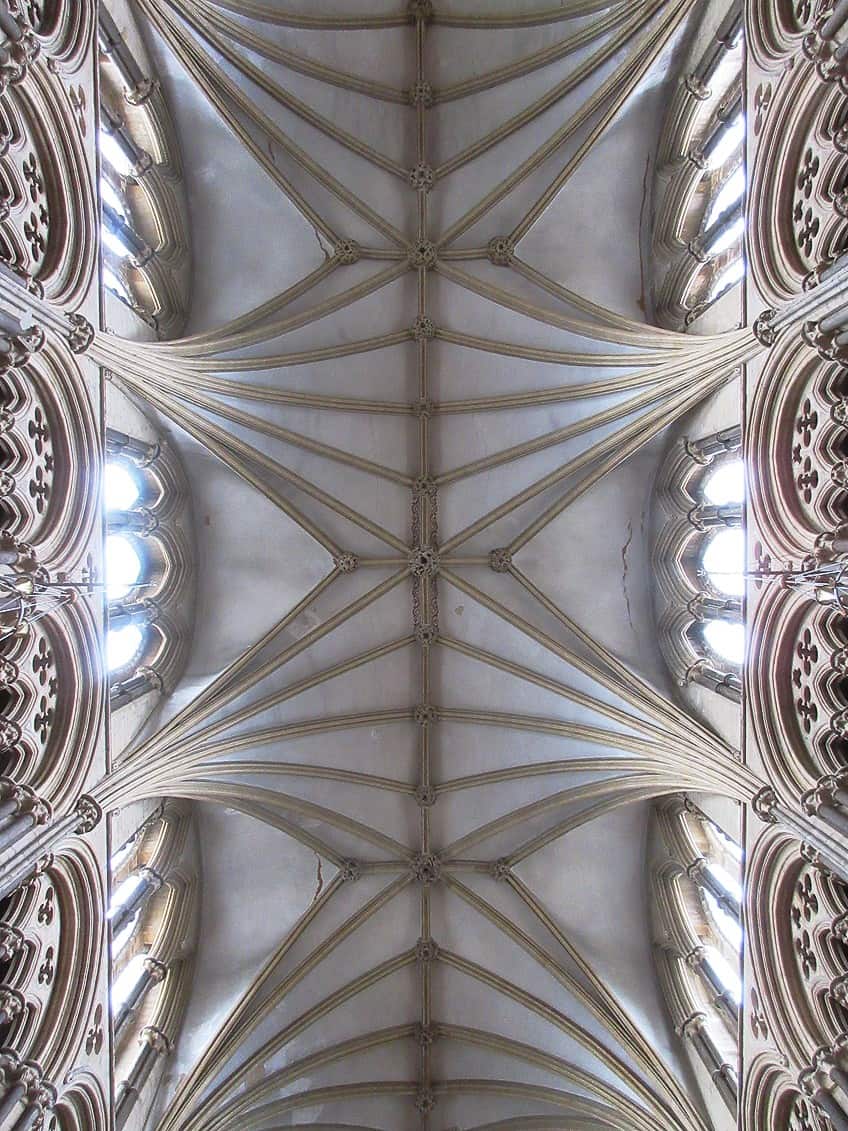
One of the only parts of the cathedral that still makes use of the old Romanesque design is the west front of the structure. This section includes three portals alongside a rose window. This section has managed to survive through the ages and even survived the earthquake that decimated the remainder of the Romanesque original. During the reconstruction, the remainder of the building made use of Gothic stylings. The nave makes use of a six-bay arcade and uses clustered columns, trefoil arches, and lancet windows. It also includes a stunning wooden ceiling that has been resplendently decorated with various images of stars and angels.
The transept, on the other hand, includes a pyramidal roof and four turrets. It has rose windows and is a stunning example of a Gothic transept, and this is accentuated by the choir.
This section of the cathedral was largely extended later in the construction of the cathedral, but it makes use of a similar style to the nave with pointed arches, columns, and lancet windows. One of the most stunning additions to the structure is the Angel Choir, which includes an imp sculpture that has since become a particularly famous image in the cathedral in general. This choir also includes corbels and a series of rib vaults.
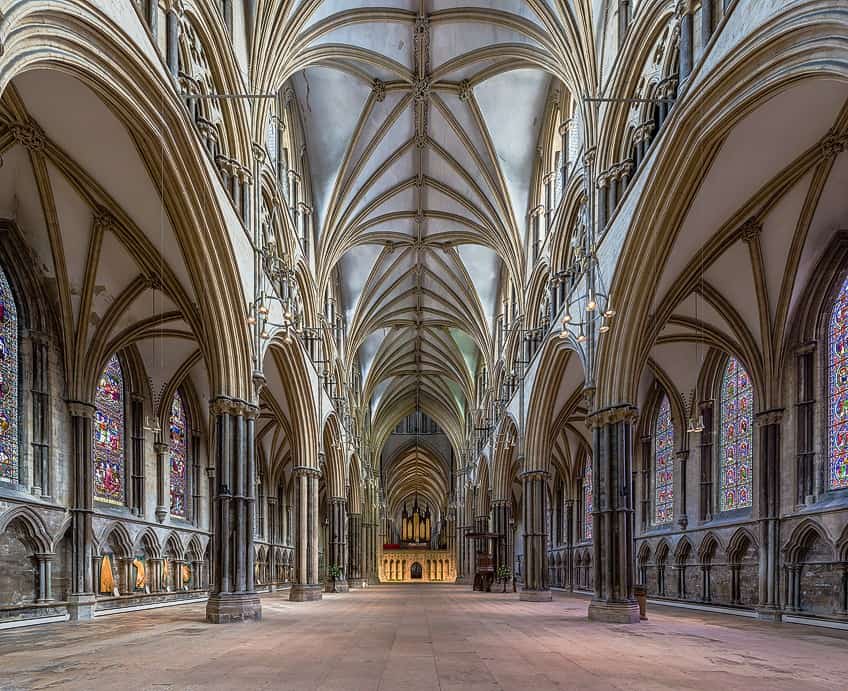
These elements all come together to produce a structure that is a fairly typical instance of Gothic architecture. While other structures may have come along that perfected many of the ideas around Gothic architecture in general, Lincolnshire Cathedral was one of the first to do it in the country, and as such, it deserves the recognition for popularizing this style.
The many other instances of English Gothic architecture owe a lot to Lincoln Cathedral for being one of the trendsetters.
The Height of the Lincoln Cathedral
During the early 14th century, a spire was added to Lincoln Cathedral. This spire was said to rise up to a height of 160 m (or 525 ft). There has been some level of dispute over this and whether this was truly the case, and it cannot be verified as it collapsed in 1548, but if this is true, then Lincolnshire Cathedral should be known for its height.
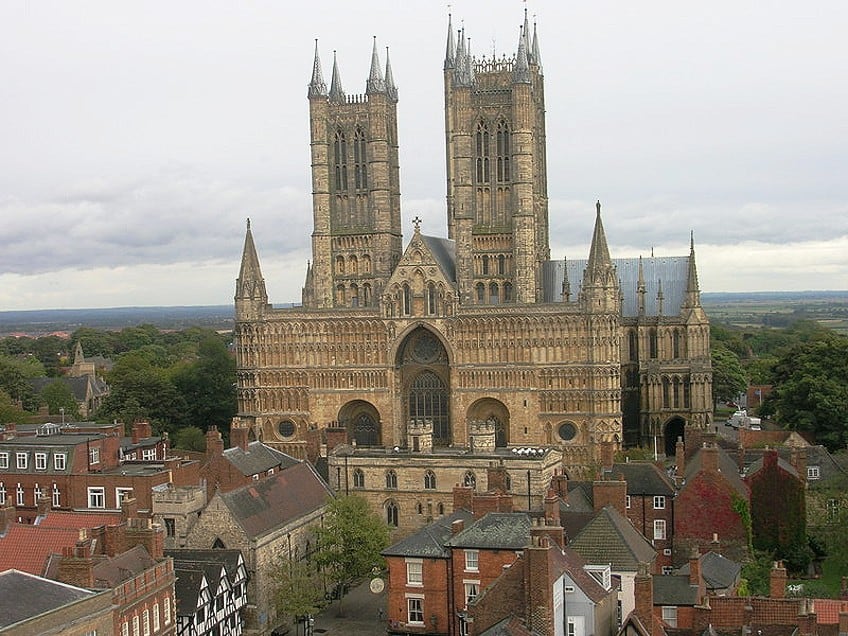
The present height of the building is already considerable at 83 m (or 272 ft), but this is nowhere near as impressive as the original supposed height of the structure.
The reason that the spire would have been so impressive was that, provided it truly was as tall as stated, then it would have made Lincoln Cathedral the tallest building in the world and the first to beat the Great Pyramid of Giza for that title. Provided the spire had managed to survive and didn’t collapse in 1548, it would have been the tallest building in the world until 1884. Only then would it have been replaced as the tallest structure by the Washington Monument in the United States. So, the history of Lincoln Cathedral is quite an interesting one for this reason among many.
The Architects of the Lincoln Cathedral
We cannot be certain about who actually designed Lincoln Cathedral as there are no records relating to this, but there are various figures who did have a strong hand in the creation of the cathedral over the years. The earliest of all of these figures was Remigius de Fécamp. This man was the first bishop of the cathedral and the founder of the original Romanesque building that has since been replaced by the current Gothic iteration.
However, while this first bishop did oversee much of the construction, he likely did not necessarily design the building.
This is why, over the years, there have been suggestions about various masons and carpenters like Geoffrey de Noiers, Alexander of Lincoln, and Richard of Stow. Each of these figures is known to have had a hand in the construction and design of the cathedral, but their roles differed over the years, and we do not have much information that is entirely for certain.

This is a major issue that can often be seen with many of the most ancient structures in the world. Today, we tend to be incredibly specific about keeping records about who designed what within our world, but this was not much of a priority in ancient times, and as such, structures like Lincoln Cathedral are left without a known architect.
However, there were likely many who contributed to the design of the cathedral over the years.
The Famous Document That Was Once Inside the Lincoln Cathedral
Lincoln Cathedral is one of the oldest standing churches in the United Kingdom, and as such, it was a perfect place to keep an important piece of ancient history. In 1215, a document was drawn up that was meant to be agreed to by King John and the various barons who had started to rebel against him. This document was intended to limit the power of the monarchy while also offering various stipulations, such as calls for justice, a reduction in feudal payments, and protection for the church.
This document was known as the Magna Carta, and while it was not supported by the king or the barons and was ultimately unused, it formed an integral part of the early democratization efforts in England.
This document would go on to become one of the most important political texts in the English-speaking world, and the reason this is so important is because Lincoln Cathedral held onto one of the original copies of this ancient political document.
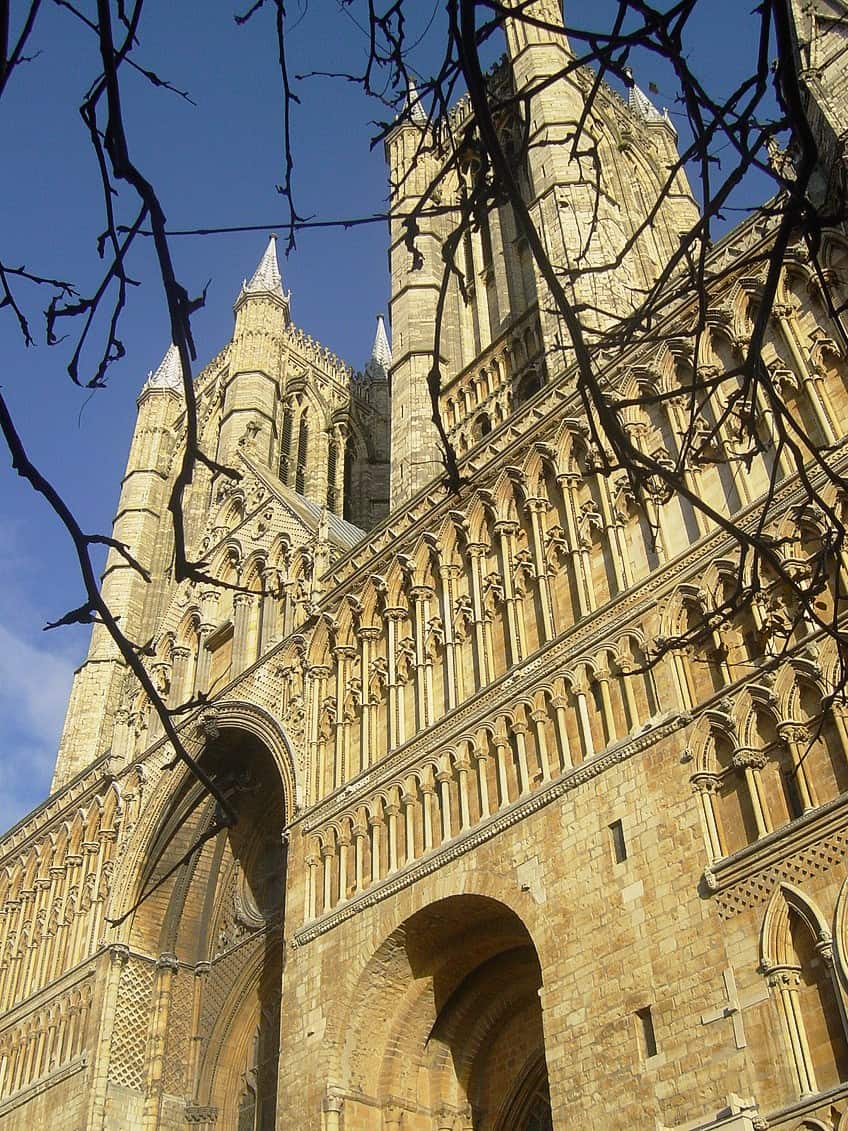
Lincoln Cathedral does not actually have this document any longer as it was transferred to the Lincoln Castle, but it did hold onto it for several centuries. It had one of the original four copies of the document, and the reason for this was that Hugh of Wells, the Bishop of Lincoln at the time, was one of the signatories of the document.
Another document that was kept in the cathedral too, the Charter of the Forest, but it too has since been moved.
Interesting Facts About the Lincoln Cathedral
There are many interesting facts about the Lincolnshire Cathedral. This is one of the most ancient cathedrals within the United Kingdom, and over nearly a millennium of history, much has transpired within its walls. So, let us have a look at just a few interesting facts:
- When Hugh of Lincoln died, one of the pallbearers was King John. Hugh of Lincoln was one of the bishops who had a hand in the reconstruction of the Lincoln Cathedral in the first place, and upon his passing, he was so revered that the king himself took part in the funeral services.
- Queen Eleanor I’s entrails were buried in the Lincoln Cathedral. After the queen passed away, her body was embalmed, and the entrails were removed. They were buried within the cathedral in a duplicate of the tomb from Westminster Abbey.
- The Lincoln Imp has become a symbol of the city. This carved imp is part of the Angel Choir and has become a prominent feature of the design of the cathedral in general. The imp was supposedly turned into stone by an angel, or so the story goes.
- A library was added to the structure that was designed by Christopher Wren. This library contains a number of important manuscripts, such as texts relating to King Arthur and early translations of the Christian Bible into English.
- The Lincoln Cathedral is the fourth largest cathedral in the country. The total size of the cathedral is around 5,000 square meters, and it is only surpassed by the cathedrals in Liverpool, York, and London.
This is only a short list of some of the interesting facts about Lincoln Cathedral, but there are many more out there that are worth learning about if you get the chance. There is always more to learn about them.
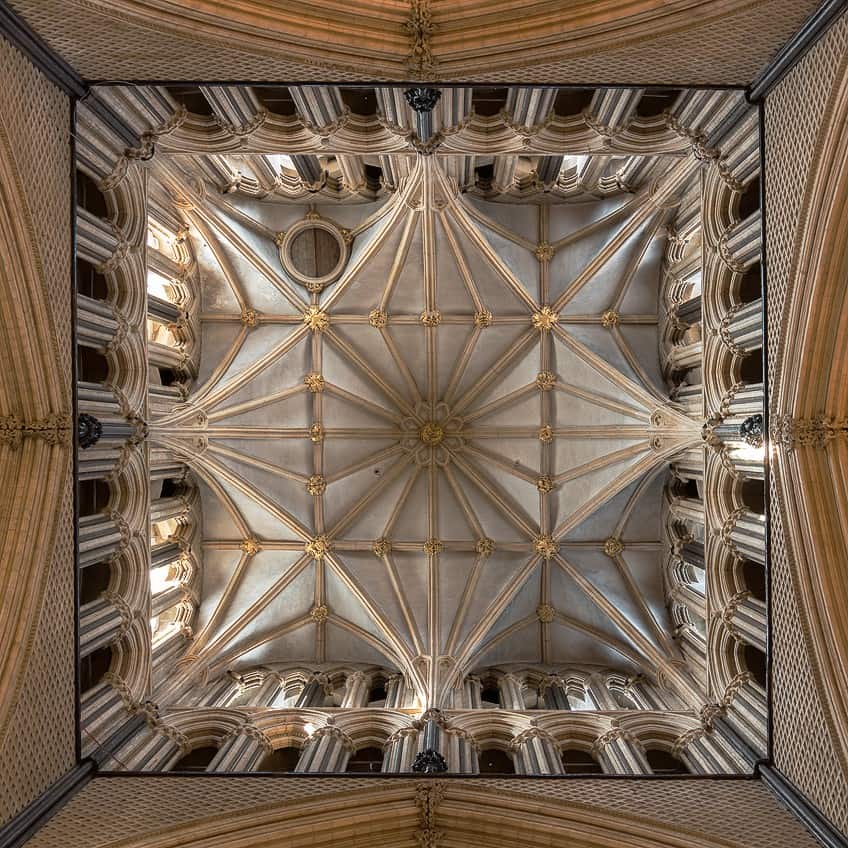
We have come to the conclusion of our discussion about the Lincoln Cathedral. This famous cathedral is one of the oldest in the United Kingdom and is considered to be a stunning example of Early Gothic architecture. In this article, we have examined the history, architecture, and architects of this Anglican cathedral, and we have even looked at some of the facts about this location that have made it particularly interesting. Hopefully, you have learned a good deal about this Lincolnshire Cathedral today, and there are many other cathedrals worth learning about throughout the country!
Frequently Asked Questions
What Is the Lincoln Cathedral?
Lincoln Cathedral is an Anglican church, and seat of the bishop, in Lincoln. This church has served the community for nearly a millennium. This cathedral has gone down in history for several different features of its construction, such as its stunning architecture, height, and the important text that had been stored within its walls for centuries.
Which Denomination Uses the Lincoln Cathedral?
The Lincolnshire Cathedral is part of the Anglican faith and is therefore one of the structures associated with the Church of England. When it was first constructed, it was a Catholic church, but during the English Reformation, it changed over.
What Famous Document Was in the Lincoln Cathedral?
The Magna Carta is one of the most important documents in the history of British politics, and for a very long time, the Lincoln Cathedral held a copy. The copy has since been transferred to Lincoln Castle, but it did reside within the church for several centuries. What makes this significant is that it was one of only four original copies of the important document.
Which Architectural Style Does the Lincoln Cathedral Use?
The Lincoln Cathedral makes use of an English Gothic style, specifically during the Early Gothic period. The cathedral is one of the first such structures in the country. Gothic architecture is known for its dedication to light-filled interiors, incredible height, pointed arches, and flying buttresses.
Who Was the Architect of the Lincoln Cathedral?
There were several architects who worked on the Lincolnshire Cathedral over the centuries. The earliest architects are not certain though, but figures like Remigius de Fécamp oversaw the early construction. Various masons were involved in the cathedral over the years, but there is nothing definitive about who actually designed the cathedral in general terms.
Justin van Huyssteen is a writer, academic, and educator from Cape Town, South Africa. He holds a master’s degree in Theory of Literature. His primary focus in this field is the analysis of artistic objects through a number of theoretical lenses. His predominant theoretical areas of interest include narratology and critical theory in general, with a particular focus on animal studies. Other than academia, he is a novelist, game reviewer, and freelance writer. Justin’s preferred architectural movements include the more modern and postmodern types of architecture, such as Bauhaus, Art Nouveau, Art Deco, Brutalist, and Futurist varieties like sustainable architecture. Justin is working for artfilemagazine as an author and content writer since 2022. He is responsible for all blog posts about architecture.
Learn more about Justin van Huyssteen and about us.
Cite this Article
Justin, van Huyssteen, “Lincoln Cathedral – Discover Awe-Inspiring Architecture.” artfilemagazine – Your Online Art Source. August 2, 2023. URL: https://artfilemagazine.com/lincoln-cathedral/
van Huyssteen, J. (2023, 2 August). Lincoln Cathedral – Discover Awe-Inspiring Architecture. artfilemagazine – Your Online Art Source. https://artfilemagazine.com/lincoln-cathedral/
van Huyssteen, Justin. “Lincoln Cathedral – Discover Awe-Inspiring Architecture.” artfilemagazine – Your Online Art Source, August 2, 2023. https://artfilemagazine.com/lincoln-cathedral/.



